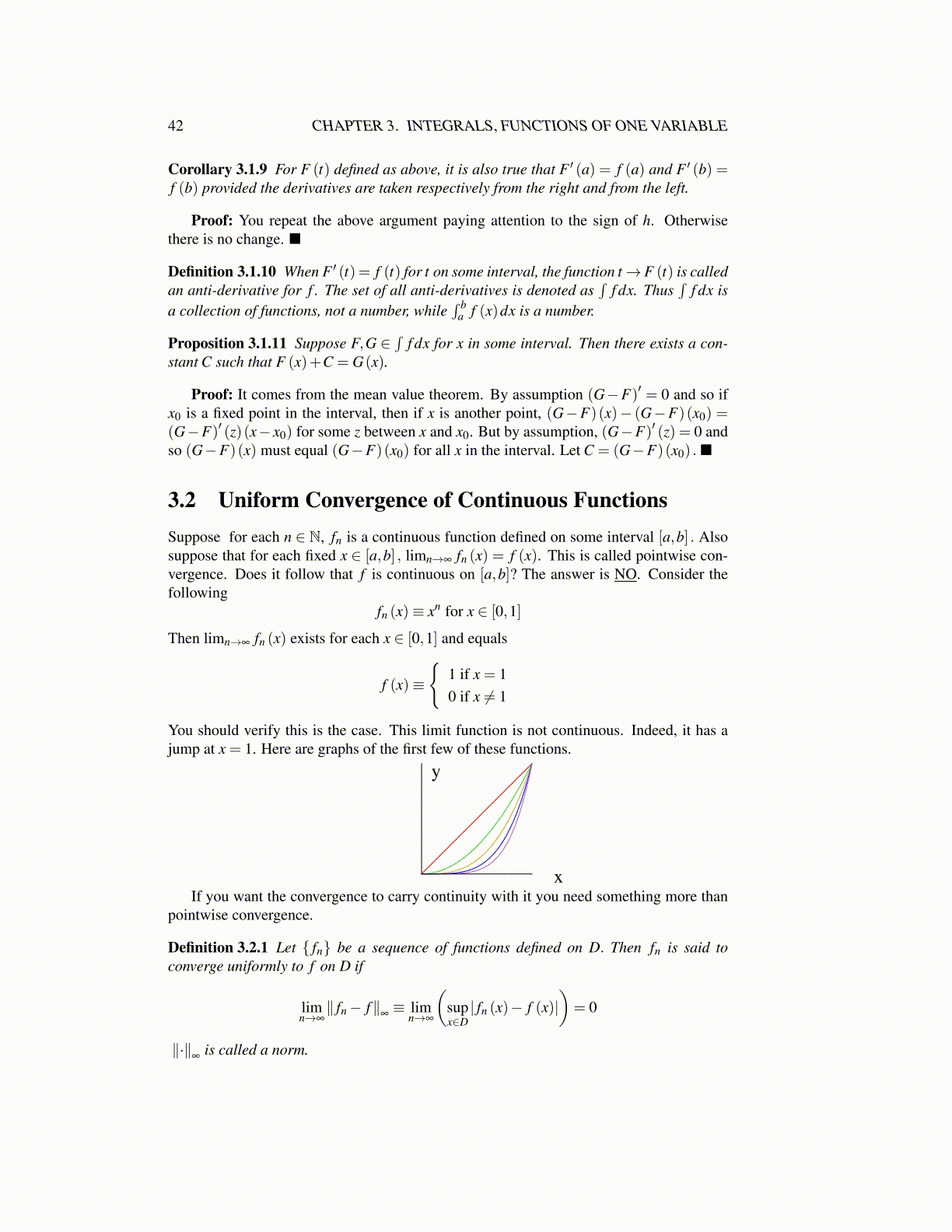
42 CHAPTER 3. INTEGRALS, FUNCTIONS OF ONE VARIABLE
Corollary 3.1.9 For F (t) defined as above, it is also true that F ′ (a) = f (a) and F ′ (b) =f (b) provided the derivatives are taken respectively from the right and from the left.
Proof: You repeat the above argument paying attention to the sign of h. Otherwisethere is no change. ■
Definition 3.1.10 When F ′ (t) = f (t) for t on some interval, the function t→F (t) is calledan anti-derivative for f . The set of all anti-derivatives is denoted as
∫f dx. Thus
∫f dx is
a collection of functions, not a number, while∫ b
a f (x)dx is a number.
Proposition 3.1.11 Suppose F,G ∈∫
f dx for x in some interval. Then there exists a con-stant C such that F (x)+C = G(x).
Proof: It comes from the mean value theorem. By assumption (G−F)′ = 0 and so ifx0 is a fixed point in the interval, then if x is another point, (G−F)(x)− (G−F)(x0) =(G−F)′ (z)(x− x0) for some z between x and x0. But by assumption, (G−F)′ (z) = 0 andso (G−F)(x) must equal (G−F)(x0) for all x in the interval. Let C = (G−F)(x0) .■
3.2 Uniform Convergence of Continuous FunctionsSuppose for each n ∈ N, fn is a continuous function defined on some interval [a,b] . Alsosuppose that for each fixed x ∈ [a,b] , limn→∞ fn (x) = f (x). This is called pointwise con-vergence. Does it follow that f is continuous on [a,b]? The answer is NO. Consider thefollowing
fn (x)≡ xn for x ∈ [0,1]
Then limn→∞ fn (x) exists for each x ∈ [0,1] and equals
f (x)≡
{1 if x = 10 if x ̸= 1
You should verify this is the case. This limit function is not continuous. Indeed, it has ajump at x = 1. Here are graphs of the first few of these functions.
x
y
If you want the convergence to carry continuity with it you need something more thanpointwise convergence.
Definition 3.2.1 Let { fn} be a sequence of functions defined on D. Then fn is said toconverge uniformly to f on D if
limn→∞∥ fn− f∥
∞≡ lim
n→∞
(supx∈D| fn (x)− f (x)|
)= 0
∥·∥∞
is called a norm.